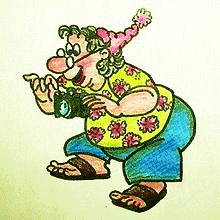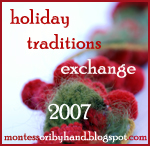Chocolate! Today was the exciting trip to the Chocolate Exhibit in San Francisco.
Where do I begin? After parking the car and walking down a block or my thoughts were interrupted by a man sitting in the corridor of the building. "Hello." "Good Morning." "How are you ma'am? Everything going o.k. for you?" "Yes, thank you. And yourself?" "Not so good. I pay $575.00 for a room. ONE room. So I sit here to try and get my food money. I mean I have a room, but the rest I try to get help with. Can you help me?" "I am sorry, no, I can't, I only carry my ATM card. Can I bring you a burger later?" "No, ma'am. Are you sure you're o.k.? I mean, I got $5.oo I can give you it right now if you need it." "No thanks, I have enough." "You sure, you look like you could use $5.00." "No, thanks, I need to head into the museum now. See you later." "Sure ma'am. Bye and God bless you." I guess I should have dressed better.
As I walk into the museum there is a sea of lime green shirts on very small people. When I say a sea, I mean if you were between the ages of 6 and 14, you were at that museum to day. Yeowsers! I allow the kids to get in ahead of me, I figure (correctly) they will fly through the exhibit while I tend to linger a tad more. I took two pictures of the display case before the entrance and then a security guard comes over to me and very aggressively informs me that "THERE ARE NO PHOTOS ALLOWED IN THE MUSEUM!" well o.k. then. I crawl past him and enter the exhibit, slowly regaining my original size.
The first part of the exhibit is rain forest education and just how the trees that produce cacao are grown and where. There is a Really -really- creepy Leaf Cutter Ant LIVE diorama. This display case is Gynormous with about 80BILLION red ants going all Geoffrey Dalmer on these fake trees with actual branches. They are chomping and carrying the bright green dime sized pieces back to a small container behind the scene. This diorama extended the entire length of the wall (24 feet?) and about 8 feet tall. (The whole point being how everything in the forest is symbiotic and the ants help fertilize the tress, yada yada yada...)
Next came ancient pottery and the uses of cacao by the Myan Culture. Cacao was prized and expensive and used by the elite and also as sacrifice for the gods. Special apparel was worn while drinking a cup of the then bitter elixir made from the cacao and water. Not just any cup would do, special urns, pitchers, and bowls would hold the spectacular liquid. During the processing, again, only the special grinding bowls and basins would be used. Drinking the cacao required special clothing and adornments of high quality. In the display there were rich dark green beads made from an unnamed rock, but polished and spherical about an inch in size and long enough to hang around a man's neck and still reach his navel. At the center of the strand were ornaments of the rock in odd designs, I presume were symbolic carvings. Ear plugs were mentioned and shown twice as was a beautiful 5-6 pointed flat star-shaped white shell carving with a spiral cut out of the center. This piece was noted as specific to honour Quetzlcoatl; the god they worshiped above all others.
After the Aztecs came the Spanish! And they kept their secret passion for chocolate for quite some time. But when they finally shared the secret (1600-1700) it hit big with those who could afford it's "intoxicating" and "addictive" taste! Neither of the prior terms are truth, but ask any chocoholic and they may tell you differently! The rich and famous eventually created shops similar to Starbucks where they could meet, chat and enjoy a hot cup of (the still bitter) drink. Charles II of England tried to pass laws and policies that would eventually close these shops. His concern? Political! It seems that his political enemies would gather around a steamy hot cup and plot his demise! (dun dun duuuuun!) Also invented in this era was the infamous saucer! Prior to chocolate drinking it seems no one cared too much about spilling! But with the popularity of cocoa among the elite and wealthy the stains peaked someone's interest into saving the costly clothes that were being dribbled on, hence, the saucer. At the show there were exquisite examples of the fine china sets that rival any tea sets you may seen. These delicate beautiful sets were thin porcelain and hand painted with scenery, flowers and graphic designs. One particular set that caught my eye was a covered cup that would hold about half cup of cocoa. The lid was domed and had a red rose bud for the handle. Gorgeous! The saucer was also very interesting as it had an intricate scroll-work cut cup-holding bowl formed into the saucer. Shaped like a small bowl, the cup would fit into this bowl (with a small slice cut through to the saucer to accommodate the handle) to avoid spillage. It too, was hand painted with red rose buds and other small flowers.
"It's strengthening, restorative, and apt to repair decayed strength and make people strong!" Louis Lemery 1702 (I'm not sure, but I think Louis here thought chocolate made you strong...)
This brought us to the slave trade that boomed when the demand for cacao/cocoa rose. The 17/18th century brought a new awareness of the benefits of drinking cocoa. Adding sugar added a demand for this product and that increased the demand for slavery as well. William Cadbury saw the slave trade and the influence cocoa and sugar had on it and began to protest. When abolishion came, working conditions for the freed slaves did not. In 1907,William was so displeased with the industry and it's work ethics that he called for a boycott among all the cocoa producers in England and Europe. His letter to other owners of companies helped to improve the former slaves and all others who worked to bring chocolate to the masses.
During 1875, Daniel Peter added condensed milk to chocolate. Along with the added sugar, the added milk made the chocolate affordable and tasted "better" to the common people. (S'mee!) The more sugar and milk added -the further the cocoa went, eventually others added everything from eggs to bread to cocoa to help make a variety of products.
"Candy making should be taught and acquired as one of the womanly accomplishments. Each household should have on hand a small stock of fancy molds." - Sindney Morse, Household Discoveries, 1913 (dang that women's lib anyway!)
Approximately 1890, Robert L. Strohecker invented the beloved easter bunny!
Scientific fact: The chemical phenylthylamine is in chocolate and it is the same chemical the body produces when the person producing said chemical is feeling "in love". oooh la la!
Scientific fact: Chocolate contains theobromine, which enlarges the blood vessels. Medical professionals now are using this as a treatment for high blood pressure! (this could totally explain S'mee's tendency towards extremely low blood pressure!)
Scientific fact: Chocolate does indeed contain caffeine, but in too small of quantities to affect the brain, such as in a cup of coffee or glass of tea.
Other facts: The U.S. is #1 in the world for grinding cacao and getting it ready for processing.
In the 1970's the demand for cacao peaked! In 2000, there was such a surplus of cacao that it exceeded 1 million tons! This created an all time low and prices went to the basement! Today, June 16, at approx. 11:30 a.m. Chocolate was down $16.00 at the New York Stock Exchange. Call your broker and BUY!
Cacao MUST be hand harvested, creating jobs (both good and bad). The pod, about the size of a pineapple, is rooted right onto the trunk of the tree. It takes a tree at least 2 years before a pod is ready to be harvested. The pods look similar to the pods in Body Snatchers. Once removed from the tree, the pod is opened and scraped clean of the fiberous and slimy and smaller seed pods inside. The seeds inside are about the size of your thumb tip and are left out in the sun to dry on banana leaves and ferment for at least a week. After a week the size, taste and colour of the seeds have changed from a creamy white to a slightly wrinkled dark brown. The dark brown cacao seeds are then packed in burlap or other air infusing material for shipping. They seeds need to remain dry to prevent molding (ugh!).
Cacao is best grown in the shade and tropical climate. This is beginning to devastate the rain forests in some area, however grower are beginning to use the outer edges of the forests, which do not effect the crop nor the forests at all. Great solution! The largest producer is in Africa, Ivory Coast, where there is concern about child labour. There are laws that prevent child labour and efforts are being made to see that producers eliminate children from there work force all together. The U.S., England, and most of Europe refuse cacao products from farmers who use children; which is helping to force other farmers to more ethical practices in the fields and factories.
One item on display fascinated me. It was a sculpture depicting the Day of the Dead, a celebratory day for honouring relatives who have gone ahead of you, so to speak. The sculpture, according to the museum notes, was designed to show the history of the holiday. "It represents the "Tree of Life" as based on Mexican "folklore" mixed with Biblical histories." Interesting. The base is a woman's skeleton and has many levels for dead loved ones to reside according to the life they earned while on earth. There are devils nearer the base and owls towards the top. Other fancy and colourful birds are sprinkled throughout. The top has a place for seven candles. Again, interesting.
For even more information check this out. For recipes here's where you want to be!
Enjoy!
p.s. as I was leaving it was raining. Nice. I was wearing a white tee-shirt. Needless to say I ran to the garage where the car was parked! lol The Street-guy was no longer in the corridor. Perhaps he went home, out of the rain.




















No comments:
Post a Comment